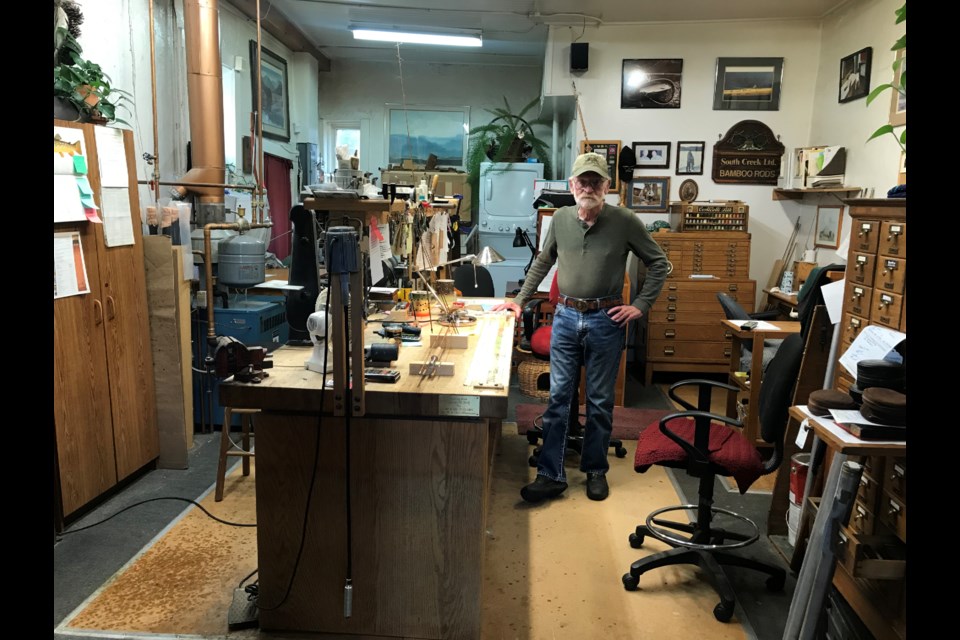Michael D. Clark operates a shop in Lyons offering hand-crafted fly fishing rods.
Clark wasn’t always a rod maker. In his younger years, he was a construction superintendent and rod-making was a hobby.
“I was just making (rods) and giving them to friends and family until one day a guy walked into the garage where I was working, he saw one laying there and said, ‘How much?’ I went, ‘Wow, I can sell these?’” he said.
Clark spoke of where he learned his craft. “Forty-three years ago, there was no internet. So you went to the library and got books — that’s where I started,” he said.
The most instructive book Clark found was “A Master’s Guide to Building a Bamboo Fly Rod” by Everett Garrison and Hoagy Carmichael. Garrison was a New York engineer who developed a famously precise bamboo rod-making method that was adopted by many craftsmen.
Clark said he took Garrison’s methods and developed his own variation. “I didn’t like the Garrison rod tapers; to me they were too stiff. So, with a little modification here and there, they turned out to be what I liked,” Clark said.
The “taper” is essentially the rod’s shape. A rod’s tapering is important for fly fishing techniques because it influences how much the rod flexes.
Clark attributes much of his success to being covered in the Longmont Daily Times-Call by John Gierach, a well-known Colorado author. “It just took off from there.”
Gierach and Clark are old friends and bonded over fishing long before Gierached achieved fame as a writer.
“When I first met John he was writing for the Times-Call and working in a convenience gas station at night. We struck up a friendship and fished together for a lot of years. In many of his early books, he writes about our adventures in the woods. You know, guys sitting on logs telling lies to each other,” Clark jokingly said.
Clark keeps the 12-foot stalks of bamboo used to make his rods at the front of his shop. With a high-quality stalk, he said he can make two rods. “Don’t shortchange yourself on material,” he advised.
Not limiting himself to making entirely new rods, Clark restores old ones, as well. He also stocks his shop with items from other craftsmen and artists such as fly boxes, rod cases and fishing-themed oil paintings.
Rods can be made from various materials, such as graphite and fiberglass; preferences vary among anglers. Clark admitted to owning a graphite rod himself and said graphite can be used to make longer, lightweight rods for more intense, ambitious anglers. Non-hollow bamboo rods, however, have their own virtues.
“The (bamboo) rod has mass where graphite doesn’t. That’s what makes it cast and feel so good. It’s just a smoother, softer action,” he said.
According to Clark, a smoother action is just what anglers looking for a relaxing day on the river might need.
“As (anglers) age, they start looking for something that’s a little slower, smoother instead of what we consider ‘combat fishing’, go as fast as you can all day and all the fish have to be over twenty inches,” he said.
For Clark, fishing is simply about enjoying the outdoors. “You go to the river and you watch the fish rise, listen to the river, the wind in the trees, that’s what it’s all about.”



